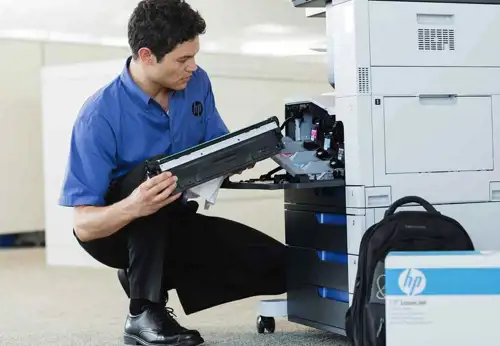How to Effectively Measure Managed Print ROI and Costs
There are many reasons why a business would invest in managed print services, whether for convenience, compliance, security concerns, offloading work from a slammed department, or simply saving money. And when it comes to money, why would a business outsource a service without expecting some kind of ROI?
Is your MPS provider really saving you money and trouble or helping with compliance? Was their evaluation process informative enough for them to find the best strategies and implement them? Are you able to review their information in an ordered, systematic way?
The fact is, some managed print providers can't do a thorough job, especially when it comes to showing how they are working for you to save money. This can cause businesses to doubt the effectiveness of managed print services in general.
We have worked with large companies and hospital systems, utilizing a process that we pioneered and developed. In this article we look at pitfalls that hinder a true evaluation before decisions are even considered. We also explain how we provide real data that can be understood so you can plainly see your managed print ROI.
Main Issue Hindering MPS Evaluation?
The problem that most companies have, especially as they grow and become larger, is they’re unable to measure their costs across all devices. Maybe they can do it for copiers, but even then it's difficult if you have multiple leases, especially on printers. Imagine how hard it is to capture all your supply costs, who services the printer, is it supported in-house, and the per-instance costs for that.
The complication is not simply that the devices are treated as a group. It goes deeper for most companies. If your business purchases toner on an as-needed basis, how can you determine the exact cost? Let's say, for example, you have 20 HP LaserJet printers -- all the same model -- and a closet of toner cartridges and supplies for these printers. Who keeps track of exactly what goes into one printer vs another printer?
On top of this, what happens if you put a cartridge into a printer, and the printer dies and is replaced by another printer? How do you track those department costs? It can get confusing the more moving parts there are, which makes it tricky when it comes to transparency of costs. One printer can be three cents a print, while another of the same model is two cents a page. What is the cost-per-print your company wants to use? Is it better to measure cost-per-print by department or by model?
If a supplier can’t accurately measure what a client’s printing costs are, or relay that information to their MPS customer, how can your provider say, “We are saving you money?” What is the measurement for that? It can be an empty number said to make you feel better.
How Do You Approach This Problem?
The first step is to implement a system to measure the fleet. By measuring the fleet, we mean inventory, the costs, and the volumes of the devices, and doing so on a continual basis.
For us, managed print is not a project done occasionally. It only approaches becoming a project when a print device is upgraded every five years, and analysis is done infrequently. Managed print is a process where we continually monitor your printing devices, and the process shows any changes that occur.
ROI Process for Managed Print
The process we use to analyze managed print data involves taking all of your data and putting it into different groups. Then our experts reassemble and cross-check that data and how it relates to the other data groups. This allows us to use several different combinations based on your individual goals, fleet arrangement, and size.
We also look at how managed print service costs are recorded, and work out a uniform system that is easily utilized and understood by all involved. This allows us to make sure that all data is being collected and not lost because it was recorded incorrectly.
So the first step is to implement a managed print solution system of measurement, and for us the system is your cost per print. That information will be on your invoice each month and shows us your print volume for your entire print environment. This is, after all, the most consistent cost metric of the factors, making our process the most thorough one available.
Once everything is in place, that cost per print is an easily understood measurement, removing the barriers to seeing what is actually being spent. This allows us to get effective-cost-per-print (ECCP) numbers for printers on a granular level, for the fleet as a whole, or by department.
When we have these numbers, we measure again and see if we are helping your ECCP go up or go down. When we say we are saving you money, we can provide the printer fleet data to prove we are helping your device costs go down compared to what they were.
This also allows us to factor in when you purchase another company, or blend in or remove devices, because we have a starting point and a finishing point, and we can present the data of how your costs are progressing and why.
If you would like to discuss our managed print services, please give us a call. We would love to answer any questions you may have, and see how we can serve you.








